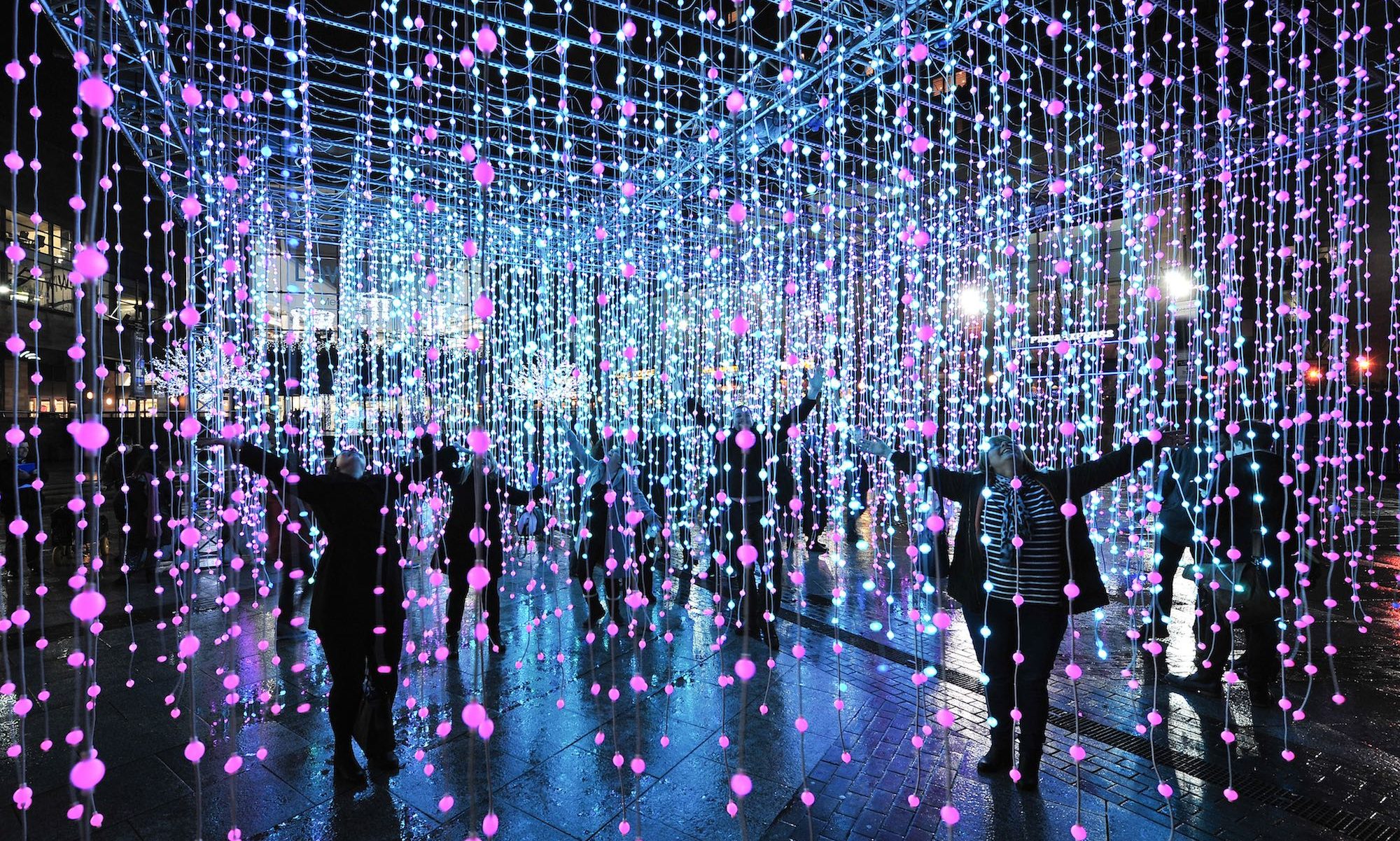
Jim Campbell was born in Chicago in 1956. He went to college at Massachusetts Institute of Technology (MIT) and graduated in 1978 with Bachelor degrees in Electrical Engineering and Mathematics. Out of college, Campbell began working as a filmmaker and has since transitioned into working as an engineer. He mainly works with image processing and holds over 12 patents in the field. In 1988, Campbell decided to showcase his talents with film, electronics and image processing by creating light art.
In his pieces he likes to use low resolution LED displays or screens. On these displays, Campbell likes to incorporate live video and video recording. He also likes to use re-imaging techniques that he learned as an engineer. In addition, almost all of his artwork requires custom electronics and programming that he develops on his own in his studio. More recently, Campbell has been experimenting with what he calls topographic works, which transform 2-D video into 3-D light sculptures. He does this by projecting 2-D video onto a 3-D surface.
Campbell also has focused on some concepts and ideas that are captured in his artwork. These concepts include interactive art or viewer control, memory and time, desire and power, and simple forms, figures and shapes. His following creations will showcase these different concepts.
The first piece, shown below, is titled “Shadow.” Campbell created this piece from 1993 to 1994 and was inspired by viewer control, desire, and simple forms. The display consists of a Buddhist statue enclosed inside a glass box with a light source. From far away, the glass box is clear and the viewer can see inside. Looking for more detail, the viewer can approach the box, but as you get closer, the glass becomes foggy and clouded, forcing the viewer to only focus on the silhouette of the figure. This piece challenges viewer control and plays with what the viewer desires to see in the piece.


The next creation is titled, “Home Movies David,” and was created by Campbell in 2014. This is a more recent version of similar pieces he has done before. In this work he uses a low resolution LED screen and displays a series of home videos of a child growing up. In this particular piece, the child’s name is David, and he was born a year before Campbell was. Campbell likes this work because he can relate to many of the things shown in the video. The concept and idea behind this creation was to illustrate memory and time. Although Campbell creates his works for personal satisfaction, he hopes that other viewers may feel the same way and be able to relate to his artwork.

Campbell’s following art sculpture is an example of one of his topographic works. The sculpture itself is a topographic reconstruction of a wave in the ocean. Additionally, a video of a moving wave is projected onto the 3-D surface from behind the piece using a programmed, low-resolution LED screen. In this art sculpture, Campbell focuses on a simple form, a wave, and transforms it into this mesmerizing display of art and creativity.

Lastly, the installation shown in the picture below was designed by Campbell in 2014. It is currently on display in the San Diego Airport. This visually impressive artwork is about 700 feet long and captures travelers’ attention as they walk through the airport. The piece is a massive low-resolution LED screen. For this piece, Campbell displays videos of a few different things. He shows videos of swimmers, filmed from the bottom of a pool, birds flying in the sky, and other images of people walking or jogging. This is another example of a piece that focuses on simple figures and shapes that can be identified on the low-resolution display.

The following video provides more information about Jim Campbell. Campbell also describes some of his inspirations and techniques that he uses to create his artwork and explains why he creates his pieces.
